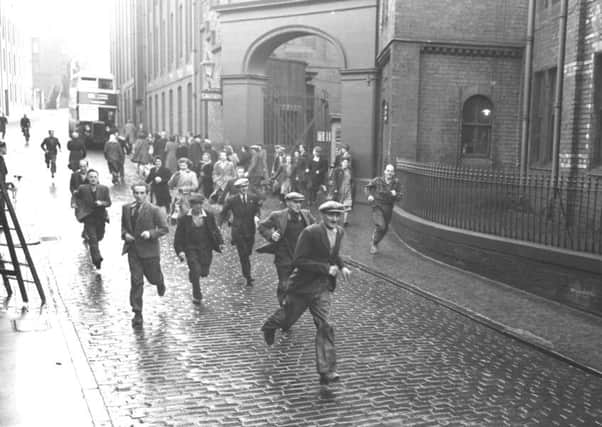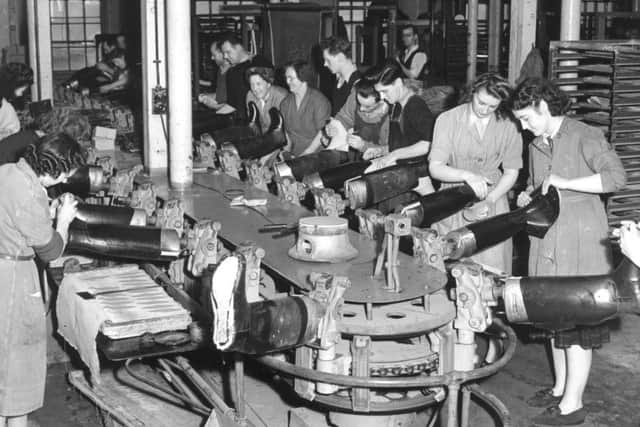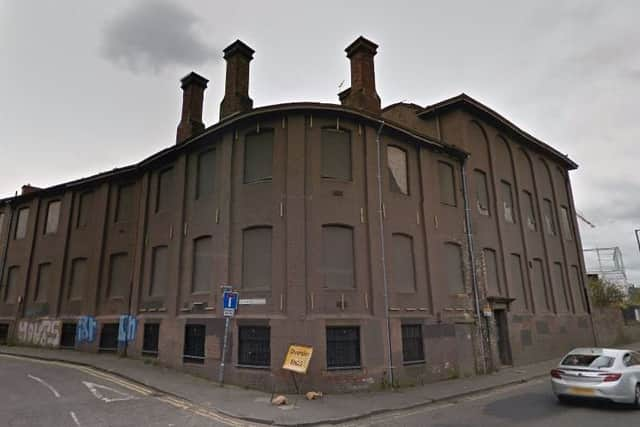The last remnants of Edinburgh's '˜welly boot' factory


Don’t be fooled by the state of its decayed brick exterior, for this was the site of the North British Rubber Company’s Castle Mills works, an employer of several thousand at its peak and the birth place of the world-famous Wellington boot as we know it.
The origins of the North British Rubber Co stretch back to January 1856, when innovative American businessmen and boot-makers Henry Lee Norris and Spencer Thomas Parmelee acquired a large plot of land close to the Union Canal at Fountainbridge which had previously been home to the Castle Silk Mill.
Advertisement
Hide AdAdvertisement
Hide AdFellow American, Charles Goodyear, had discovered the vulcanisation process in 1839, which transformed naturally occurring sticky rubber into a durable material with seemingly limitless potential uses. The shrewd Henry Lee Norris was keen to capitalise on this potential and within just six months the new business, dubbed Norris & Co had begun manufacturing a variety of rubber products, including machinery belts and footwear. The name of the business changed to the North British Rubber Co the following year.


In the beginning the workforce numbered just four, but by 1875 more than 600 men and women were earning their crust at Castle Mills.
The company were trailblazers from day one. In 1858 co-founder Parmelee took out a patent for one of the first conveyor belts, while in 1890 the landmark invention of the detachable pneumatic tyre was credited to new owner William K Bartlett.
At the turn of the century Castle Mills was the largest industrial unit in Edinburgh. It produced a diverse range of goods from golf balls, hot water bottles and combs to hoses, rubber sheeting and equipment for heavy industry. At its peak the mill employed up to 8000 people.
Advertisement
Hide AdAdvertisement
Hide AdCases of trench foot during the First World War would have been a lot more common if not for the workforce at Castle Mills. More than 9000 employees at the North British Rubber Company worked day and night to produce 1,185,036 pairs of boots for the British Army. The rubber Wellington boot was the envy of the enemy.


In World War Two, Castle Mills was again requested to produce vast quantities of boots as well as gas masks, tyres for army vehicles and barrage balloon fabric.
By peace time the ‘welly’ boot had entered public consciousness, fast becoming an essential piece of civilian footwear. For those in the inclement British Isles, the welly boot was a Godsend. In the 1950s the company helped to speed up the demise of Edinburgh’s tramways by throwing its weight behind the production of tyres for the increasingly popular motor bus. Castle Mills was also responsible for the creation of Britain’s first traffic cones in 1958.
But working at a rubber mill could be unpleasant and risky. First there was the stench. The average worker would go about their daily lives reeking of rubber, sulphur and soapstone – a pungent talcum powder-like substance which hung heavy in the air and coated the lungs.
Advertisement
Hide AdAdvertisement
Hide AdNasty accidents were commonplace too and it was not unheard of for workers to lose a finger or two from operating the mill’s notoriously fiddly and dangerous range of machinery.


Fires were a constant risk too, with a particularly bad one in January 1962.
In 1966 the North British Rubbery Company was bought by Uniroyal. Over the next 7 years operations were gradually relocated to Newbridge. The hose factory survived until 1973 and was the last manufacturing part of Castle Mills to close. After this, the 19th century mill buildings were mostly demolished to make way for McEwan’s new £13m Fountain Brewery and today only a small part of the expansive mill complex survives.
The surviving Castle Mills building dates from 1894 and has been on the Buildings at Risk register since 2010. In April of this year it was announced that local firm Edinburgh Printmakers had received a grant of £5 million from the Heritage Lottery Fund to go towards saving the structure and transform it into an arts hub. Further funding will be necessary to complete the £10 million project but a hugely important piece of the Capital’s industrial past looks to be safe for the forseeable future. Edinburgh Printmakers aim to launch the new centre in Autumn 2018.
Advertisement
Hide AdAdvertisement
Hide AdDespite the end of all rubber production in Edinburgh, the North British Rubber Company still has a presence in the city. Its fashionable Hunter Boot range which rose to prominence during the 20th century, and was endorsed by the likes of Princess Diana, has become a separate company.
There’s a lot more to the history of Fountainbridge than famous ex-milkmen, canals and heavy ales.